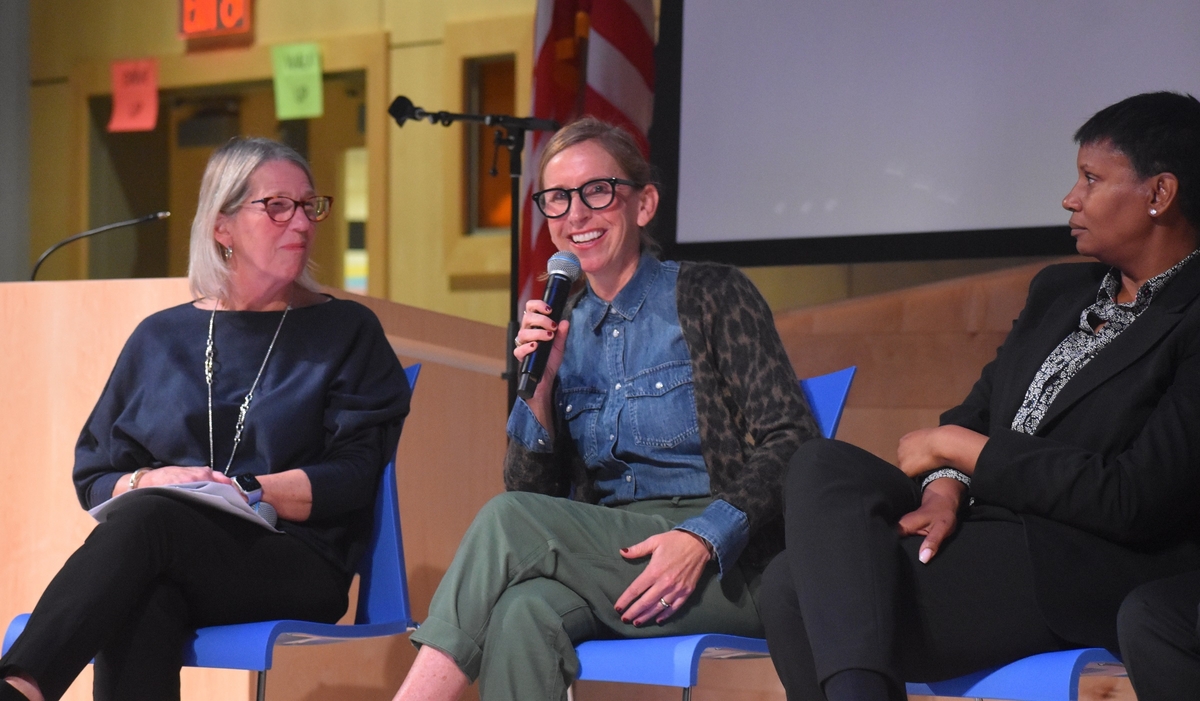
Maya McFadden Photo
Ashley Stockton (center) at "Tell Me Why It Works" panel.
The stakes of learning the wrong way to read are more than just academic for Ashley Stockton.
The Wexler-Grant teacher saw firsthand how her son with dyslexia struggled in school when following a now-outdated method that prioritizes looking for clues and guessing at words — and she saw how his literacy improved when, with the help of a costly private tutor, he began to sound words out.
Stockton shared that story of her shift in understanding about how reading can and should be taught during a panel discussion called, “Tell Me Why It Works: The Science Behind Reading.”
More than 200 attendees gathered at the Barack Obama School on Southern Connecticut State University’s (SCSU) campus Tuesday night for the event, which was hosted by the local literacy nonprofit New Haven Reads.
The discussion offered a deep dive on the very center of a debate that has been playing out in New Haven — and across the country — recently: That is, how to teach young students to read? What are the consequences of following a counterproductive “cueing” method? And why is a science-based approach focused on phonics so much more effective, and so important to follow?
“When you see that children who hate school, who don’t want to go to school, who think they’re stupid, or have low self esteem, and don’t believe they can learn anything — when you see they can be taught to read — there’s a way to actually do it, everything changes and you can’t unsee it,” Stockton said during Tuesday’s event.
The panel of speakers Tuesday included education reporter Sold A Story podcast host Emily Hanford, former Mississippi Department of Education K‑12 Literacy Director Kymyona Burk, Stamford Public Schools Superintendent Tamu Lucero, Executive Director of Education Reform Now CT Amy Dowell, and Stockton, who has worked as a teacher in the New Haven Public Schools (NHPS) for the past 16 years. The panel discussion was moderated by Literacy How founder and President Margie Gillis.
Click here to watch a video recording of the event in full.
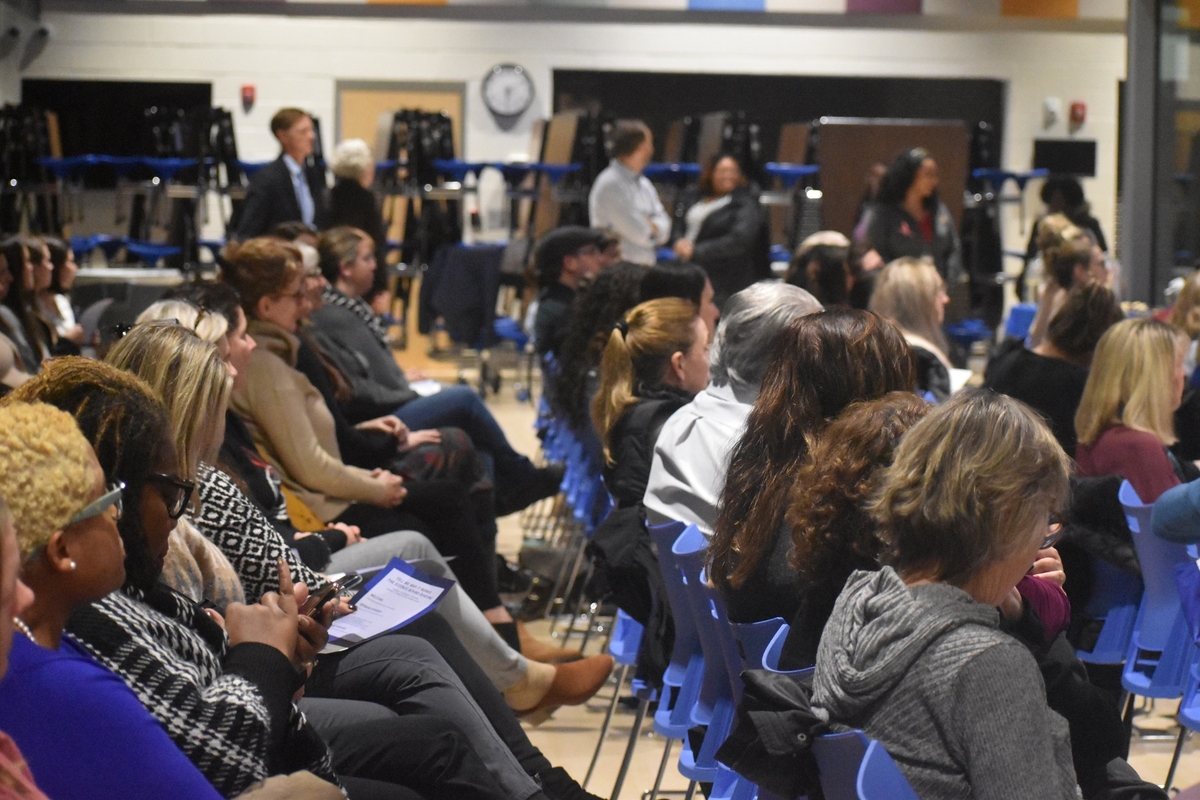
At Tuesday's event at Barack Obama School.
The panel took place in the wake of the state legislature’s passage of a Right to Read law, which requires New Haven and all other public school districts in Connecticut to implement a “science”-based reading curriculum for kindergarten through third grade to improve student reading scores by the 2022 – 2023 school year. That refers to a curriculum that is based more on phonics than ones used in New Haven before, and less on “cueing” techniques that have been shown either to fail to teach kids to read or even make it harder, like guessing words based on pictures or story context.
It also comes as the New Haven Public Schools (NHPS) district is picking between five choices for which state-sanctioned program to adopt as it builds out an enhanced K‑3 literacy plan based on the “science of reading.” And it comes after NHPS released in July preliminary reading and math assessment data from last school year that showed that 84 percent of third-graders were reading below grade level, prompting outcry from some members of the Board of Education, alders, clergy, and other community members about a reading “crisis” and “emergency.”
Mayor Justin Elicker, who is a member of New Haven’s Board of Education, gave opening remarks at the event to thank teachers for their work in New Haven’s classrooms. He also reminded the community that during the 2021 – 2022 school year reading scores in New Haven showed that 24 percent of second through eighth students met or exceeded proficient reading standards compared to 49 percent state wide.
“New Haven is not where we need to be,” he said. “We have a lot of work to do and i know that we are committed to doing the work in the right way, in a way that is guided by science and research.”
Decoding x Language Comprehension = Reading
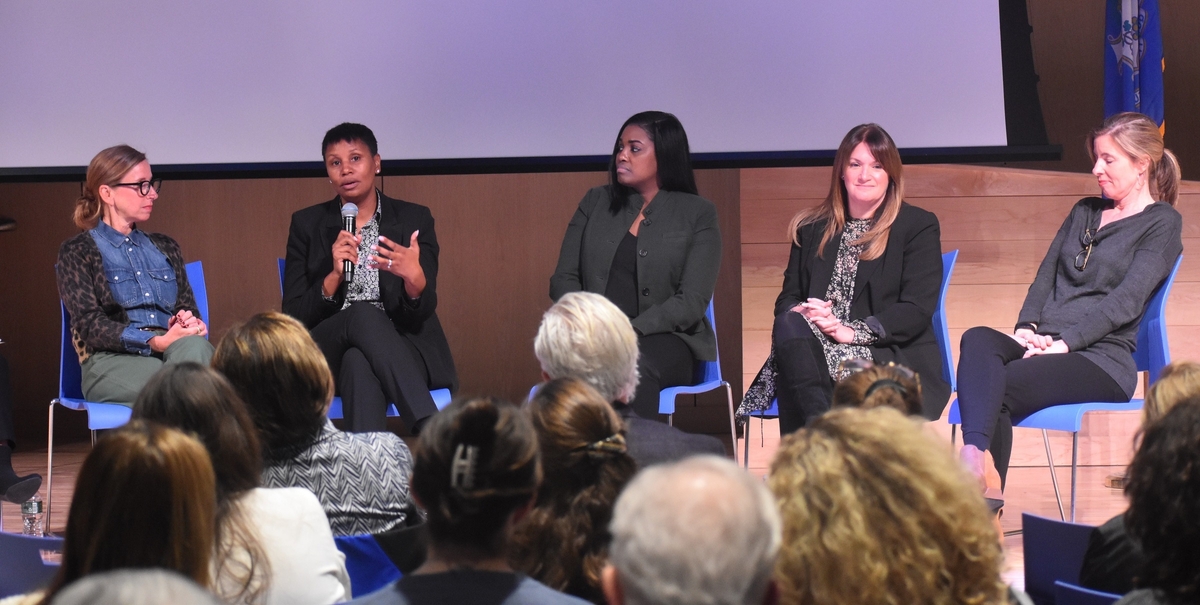
Science of Reading panelists Ashley Stockton, Tamu Lucero, Kymyona Burk, Amy Dowell, and Emily Hanford.
Keynote speaker Emily Hanford has been an education reporter for the past 15 years. She currently works as a senior correspondent and producer for American Public Media.
Hanford presented on her work over the past two decades reporting to help the nation define and follow the science of reading. She presented years of research that defined the equation for teaching reading as: Decoding x Language Comprehension = Reading.
Hanford built off of her popular education podcast series “Sold A Story” (which is co-reported by former New Haven Independent education reporter Christopher Peak) to explain the nation’s history of training educators to teach students the wrong way to learn to read. That incorrect method prioritizes a balanced literacy approach, which prioritizes “cueing” techniques that encourage students to guess at words based on pictures or story context.
“Schools think that they’re teaching kids to read,” Hanford said. “It’s not just that there are things kids need to know, but many kids are actually being taught strategies for how to read that are making it harder for them.”
Hanford said that every budding reader needs explicit instruction and should be taught phonemical awareness to decode words.
For years, educators and parents have been told that many emerging readers are struggling to effectively read due to a potential learning disorder or not finding interesting enough books, Hanford said.
However, the real issue is the lack of emphasis on sounding out words and instead teaching students to use cues and clues in the sentence or pictures to identify a word.
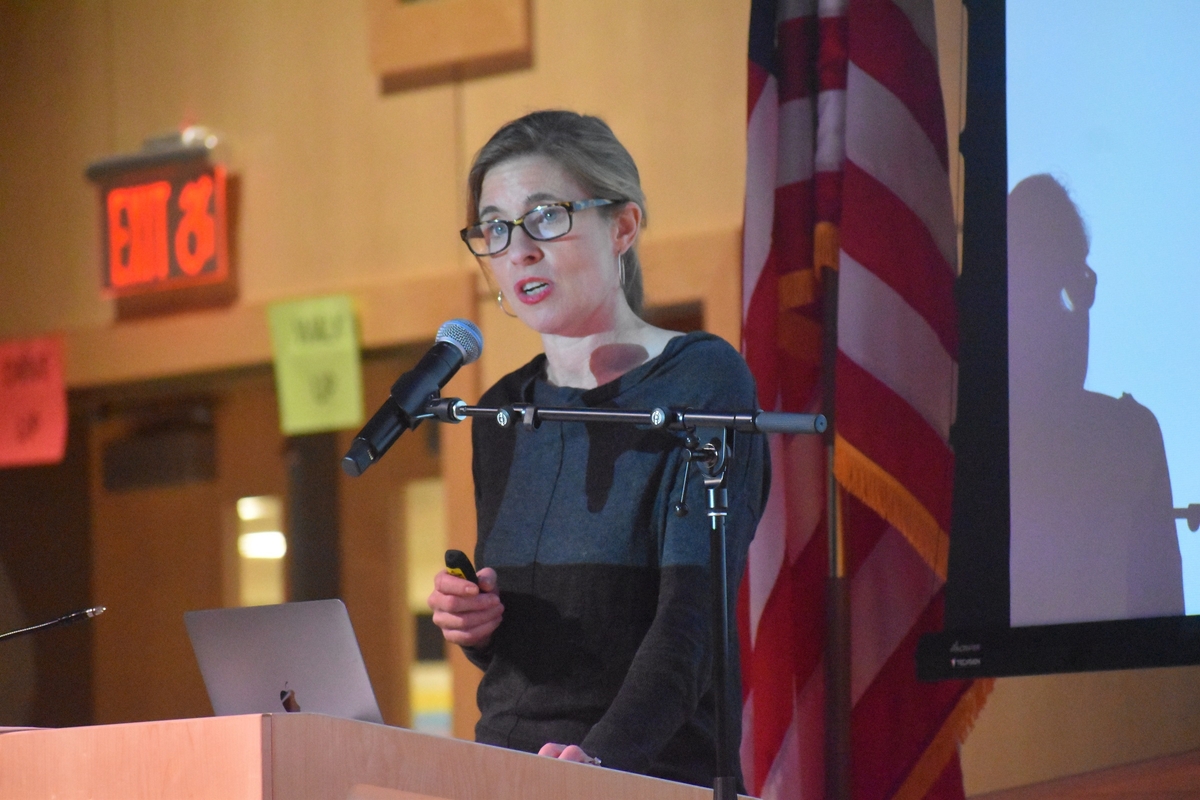
Hanford: "Instructional approaches in America have been about cueing."
Hanford explained that as a result of school districts’ ineffective reading approaches all students have not received equitable support to re-learn a more science-based reading approach due to the high cost of tutoring and dyslexia screenings. She described the process over the years as the “rich man’s game.”
“If you’re from a low or even moderate income family, there is no safety net,” Hanford said. “All kids can benefit from dyslexia instruction.”
The common teaching of the cueing theory results in teaching students not to sound out words that they don’t know, but to instead to use different strategies like guessing based on the rest of the sentence or using any pictures on the page to gain an understanding of the word. Hanford said this approach does not create skilled readers.
“That’s how poor readers read because they have a hard time with word identification,” she said. “Instructional approaches in America have been about cueing.”
"You Have To Ask For The Goods"

New Haven Reads executive director Kirsten Levinsohn.
As one of the panelists at Tuesday’s discussion, New Haven educator Ashley Stockton shared her experiences as a public school teacher who began her career in Brooklyn 21 years ago. She also spoke about how she learned to help her two children, one of whom is dyslexic, learn to read effectively.
Stockton started teaching at around the same time when New York was reforming its schools based on a new contract with Lucy Calkins of Columbia University’s Teachers College Reading and Writing Project. Calkins has been one of the most prominent and influential supporters of a “balanced” reading approach focused on cueing and guessing (she has subsequently spoken out about how she no longer believes that approach is the best way to learn to read.)
Stockton said she helped her district implement what she thought was a progressive step towards supporting emerging readers. “I taught sixth grade, and the kids in my class could not read.” she said.
She recalled creating cozy reading nooks in her classroom and reading aloud to her sixth graders who read at a second grade level. She said that following such a balanced literacy approach made her as a teacher feel good, but that ultimately proved ineffective for her students.
She was resistant to shifting her way of teaching reading because she, along with the rest of the country, believed for the first 17 years of her career that the balanced literacy methods of following context cues are “what good readers do.”
It wasn’t until Stockton’s son, who is “severely dyslexic,” went from hating school and having anxiety about school because of his reading abilities to learning to effectively read that she began to change her mind.
Stockton and her husband paid more than $100 a hour for years to re-teach her son to read through a structured literacy approach focused on sounding out words, which she learned actually taught what good readers do. In her podcast series, Hanford has reported on how common this has been in American public schooling: students who do not learn to read effectively in the classroom improve their literacy with the help of tutors, if their parents can afford them.

At center, Stamford Superintendent Tamu Lucero.
A second presentation by Kymyona Burk offered inspiration to Connecticut districts by showing the past and current results of the National Assessment for Educational Progress (NAEP) for Mississippi Department of Education.
Since its passage of the Read By Three science of reading-based legislation, Burk said, Mississippi has risen from from 49th to 29th and now 21st among states in student reading proficiency. She said the state’s Black students now rank 5th in the country. She emphasized that “we can no longer tout how well we’re doing by how well our white students are doing” at reading.
She presented NAEP data that showed that Connecticut is ranked 8th in country for proficient readers but second to last for specifically Black student reading proficiency.
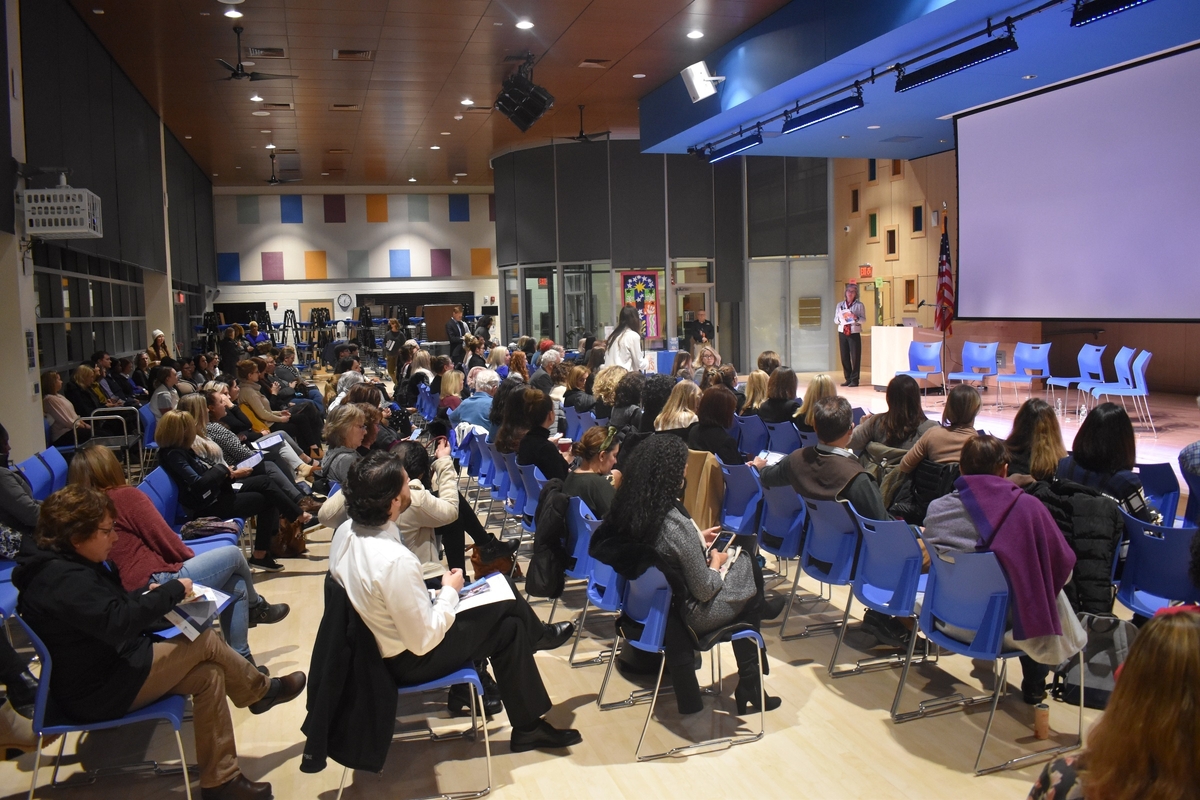
During the event’s question and answer portion, one attendee asked the question: “The biggest push back besides having time is the issue of funding. Where will the money come from” for school districts across Connecticut to make such a major shift in how they teach reading?
Amy Dowell, who helped with designing Connecticut’s Right to Read legislation, said while this is an expensive time for school districts she believes “this is the exact purpose of these ESSER dollars [federal pandemic-relief aid] and it was designated for learning recovery and this is where these dollars should be doing.”
She said school districts have had early notice of the legislation’s importance to create an improvement plan that can be supported by the federal relief money.
“We have a serious situation on our hands and it’s getting worse and not better,” Dowell said. “There is an increasing number of students being identified for special education needs and that is a huge amount of money. Tons of kids are being placed out of districts right now at huge cost to them and I really think that when there is a will there is a way.”
Another attendee asked: “What can teachers do when they are not provided with the proper SOR [Science of reading] materials?” Margie Gillis responded that educators should be bold and speak up for what they know is right and needed for the best interest of students.
“As a teacher, if you feel like you don’t have the goods, you have to ask for the goods,” she said.







My wife is dyslexic and sounds out the words. She often reads out loud, so that an auditory cue matches her visual cue. I am not dyslexic. While far from the fastest reader, I am pretty fast. I don't sound out words but act more like an optical scanner. I think this skill result from shear volume: lots of reading wired my brain to scan.